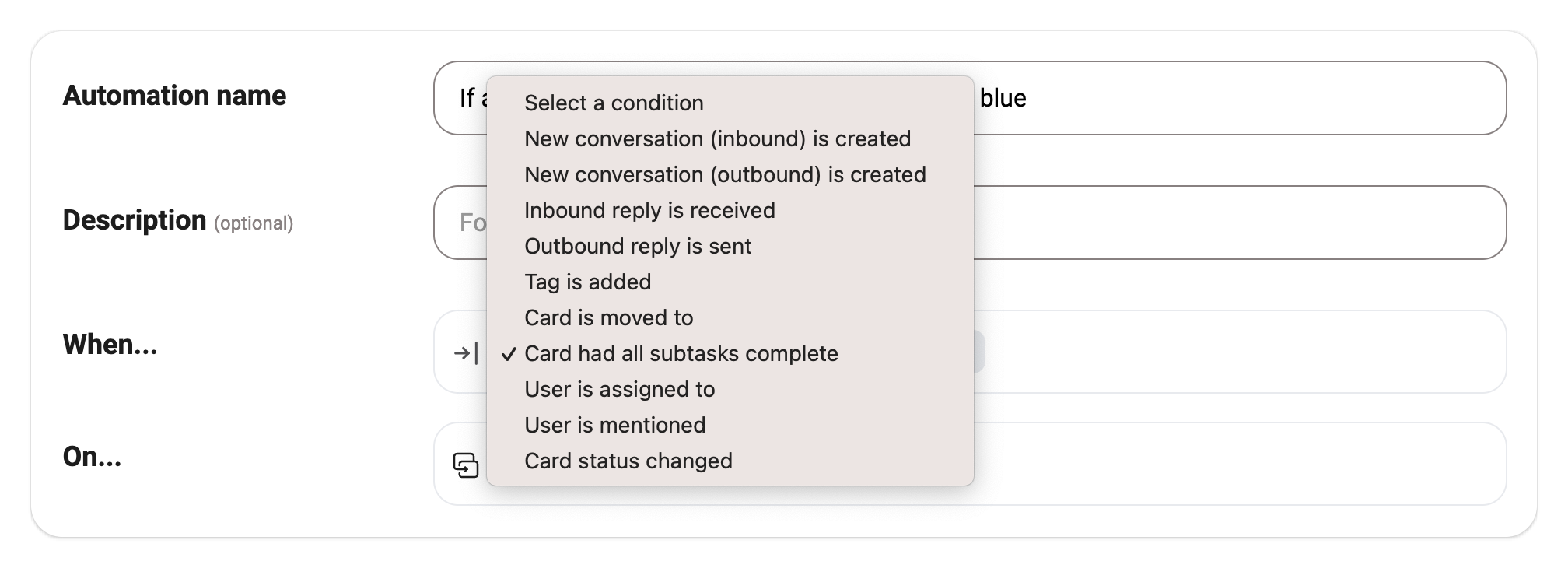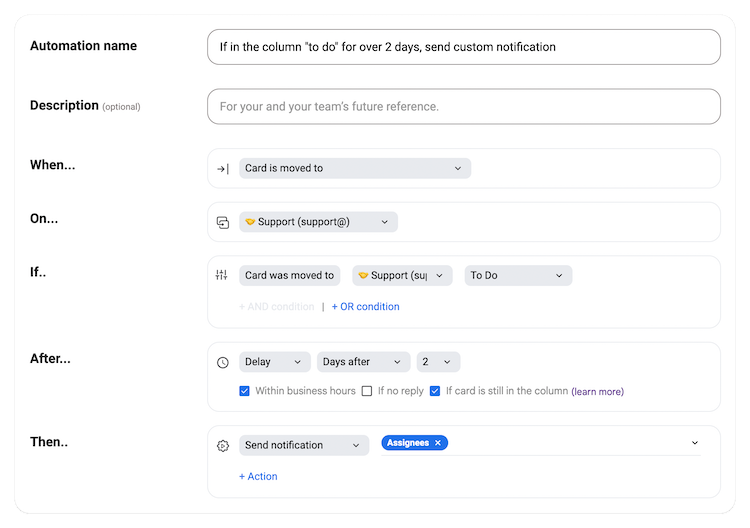We're super excited to announce more capabilities to Drag's automations this week.
⛓️ Automation triggers based on replies:
Previously, it was only possible to create automation rules based on new conversations (cards) being created. Today, we're adding the following new triggers based on replies to existing conversations:
- Inbound reply is received:a external reply (ie. from an external agent, not from your team) is received into an existing conversation in the board.
- Outbound reply is sent:your team sends a new reply on an existing conversation in the board.
These triggers open a whole new world of possibilities for automation rules, especially when it comes to SLA management.
Examples of use case:
avoid breaching times to response SLAs by re-applying SLA tags every time a new reply from a customer is received and removing it when a response is sent by your team, or increase sales response rates by getting custom reminders when you don't receive a reply back from a lead within a period of time.
🕙 Email time condition (any time or inside / outside business hours)
For the triggers New conversation (inbound) is created and Inbound reply is received, it is now possible to select the Email time condition, including emails received at any time, just within business hours or just outside business hours.
Example of use case:
set up automations to send different auto-responses to emails received, depending on whether they were received within or outside business hours.
◀️ Trigger reversibility condition
You can now choose whether you want a time-based automation to run even if the original trigger defined for it is not in place anymore. You can do that by using the new trigger reversibility condition, displayed as the 3rd checkbox under the "After..." section in automations.
For example, let's say you want to automatically send a notification 2 business days after a card is moved to a specific column.
In your workflow, 2 different scenarios can happen:
- the card is moved to the defined column and remains there for 2 business days OR;
- the card is initially moved to the defined column but, before the 2 business days have passed, it is then moved to a different column.
In this case, if the trigger reversibility is enabled, the automation will only run in the scenario #1. If this option is disabled, the automation will run on both scenarios, even if the card was moved to a different column afterwards.
